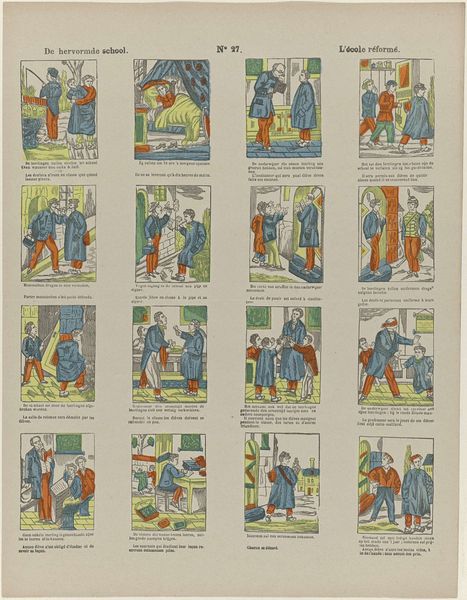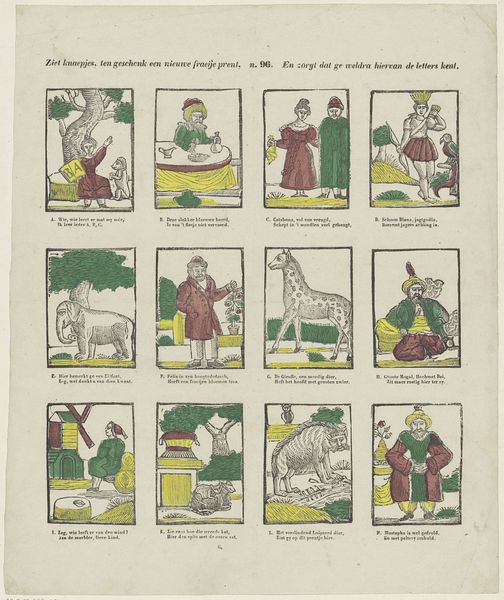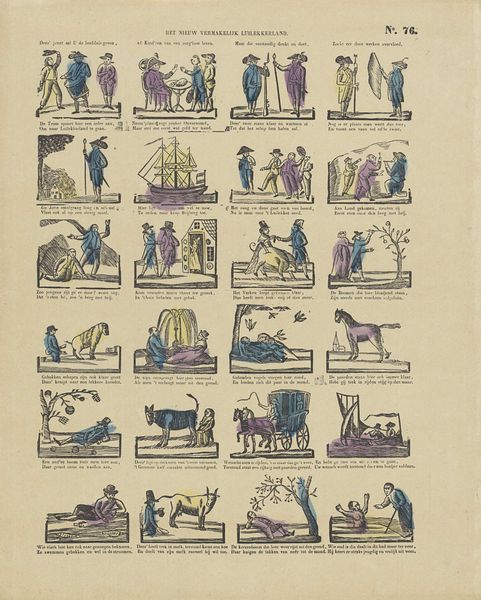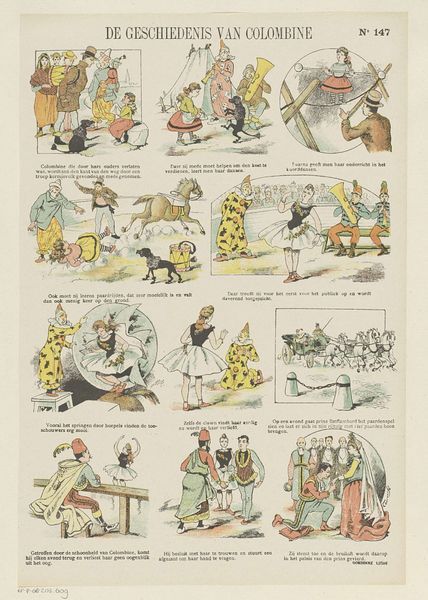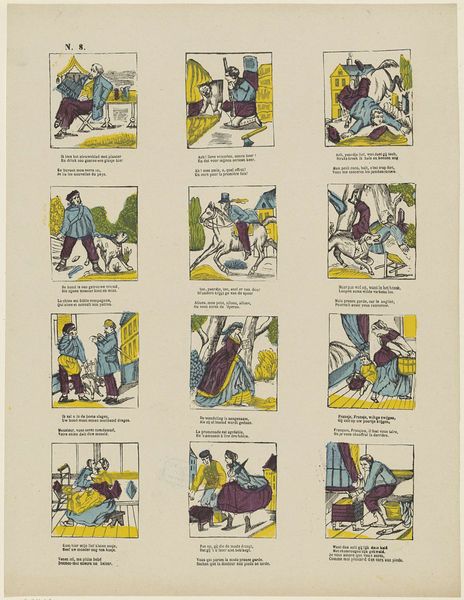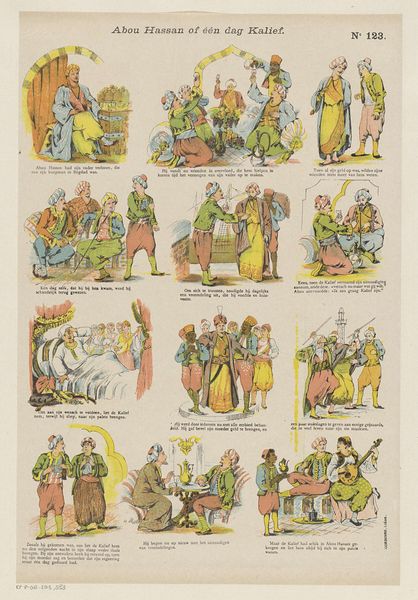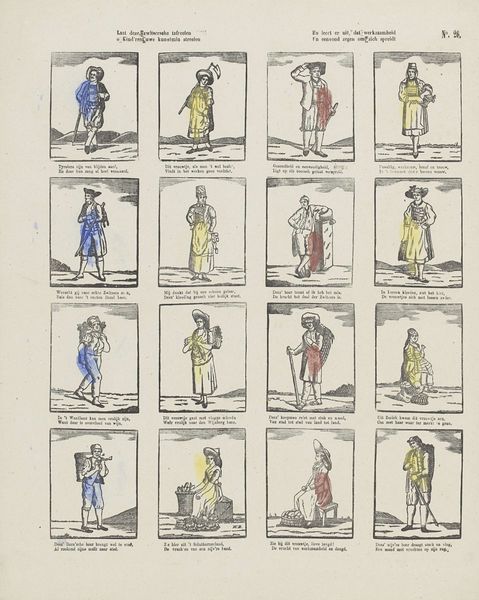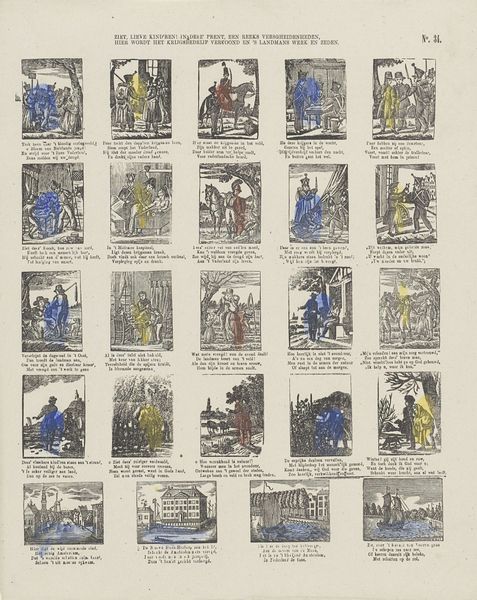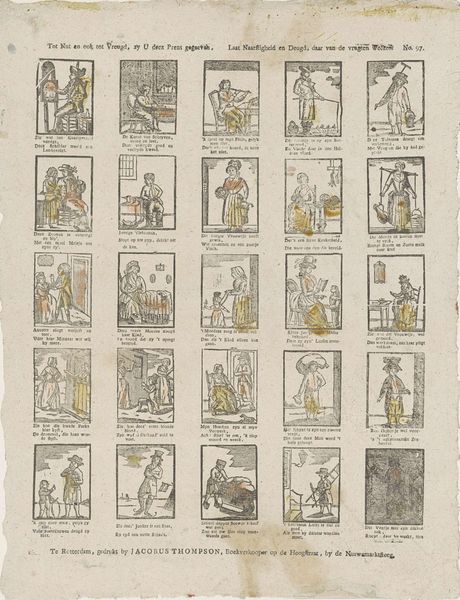
Ziet knaapje, ten geschenk een nieuwe fraaije prent, / En zorgt dat ge weldra hiervan de letters kent 1848 - 1881
0:00
0:00
lutkiecranenburg
Rijksmuseum
graphic-art, lithograph, print
#
graphic-art
#
narrative-art
#
lithograph
# print
#
figuration
#
genre-painting
Dimensions: height 386 mm, width 304 mm
Copyright: Rijks Museum: Open Domain
Curator: This lithograph, likely from the period between 1848 and 1881, bears the title "Ziet knaapje, ten geschenk een nieuwe fraaije prent, / En zorgt dat ge weldra hiervan de letters kent." It comes to us courtesy of Lutkie & Cranenburg and is housed in the Rijksmuseum. What are your initial impressions? Editor: It feels incredibly... quaint. A collection of small scenes, almost like playing cards, but with a decidedly didactic purpose. There’s an innocence to the imagery that’s almost startling. Curator: Exactly. Each vignette seems to represent a letter of the alphabet, with corresponding imagery—A for ape, B for baker, and so on. It clearly aims to instruct children, but within the visual and societal mores of its era. I can't help but note the implications for the colonialist and imperialist depictions, especially relating to racial identity... Editor: Yes, look how deeply entrenched certain symbols already were! The giraffe—so exotic, even presented standing serenely by a cluster of local flowers, suggesting taming or domination. And that image of the 'Great Mughal', rendered as something quite other... distant and passive. The messages being sent here about the Dutch understanding of the world outside are, in truth, quite telling. Curator: I agree. Consider too how such imagery, framed as harmless education, subtly reinforces those cultural biases. This wasn't simply about teaching children the alphabet; it was about instilling a particular worldview, built upon societal biases. Editor: Though, to play devil's advocate, the charm of the hand-colored lithograph might have helped these images stay relevant to younger eyes for years and years! How long do you think something like this would stay relevant or current, socially? A hundred years? Curator: Perhaps even longer. It speaks volumes about how power can be disguised, hidden in plain sight within what seems like a harmless child’s print. A new picture as a gift and also lessons, neatly hidden amongst what seem to be images devoid of ideology. Editor: It leaves one pondering the visual vocabulary that endures. This little print reminds me just how deeply intertwined our symbolic language and worldview really are. Curator: Precisely. Examining such historical works forces us to acknowledge that these constructs and biases have incredibly long and important social and political implications and impacts.
Comments
No comments
Be the first to comment and join the conversation on the ultimate creative platform.
